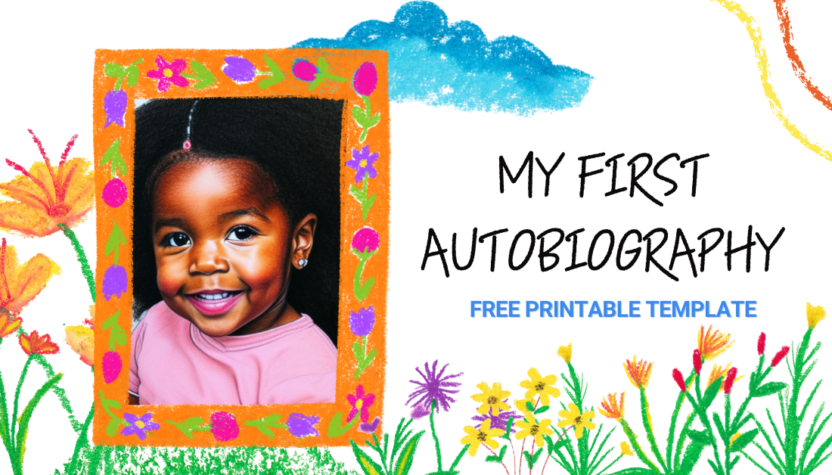Printable Autobiography Template For Kids
Helping your kids write an autobiography is a great way for young kids to learn creative writing, practice personal expression and become familiar with their own life story. Autobiographies can help children learn about themselves in a personal way which can be beneficial for healthy self-esteem and emotional well-being. Parents should encourage their kids to write autobiographies because it can provide them with valuable experiences that will last throughout their lives.
Through this process of self-exploration, kids have the opportunity to reflect on a personal experience and any significant events that have shaped who they are today. Through the process of writing an autobiography, they are able to think critically about how these memories have impacted them and what lessons they’ve learned from them. It also helps children understand how one’s own story is interconnected with that of people in their lives such as a close family member or friend.
Want to head straight to the FREE downloads? Scroll below to download the one-page ALL ABOUT ME worksheet or the autobiography template and lesson plan near the bottom of the article.
Autobiography for Young Children
An autobiography is a fun way to document your little one’s life. Writing an autobiography is a perfect way to record the events and experiences of their childhood. It can also be a valuable teaching experience, as it helps them practice writing skills and learn about themselves along the way.
When writing an autobiography for someone so young, there are certain topics that should be included. Ask your preschooler to write down some of their favorite food, as well as any places they have visited or activities they’ve done. You can add in baby information like when they were born and how old they were when they learned different things like potty training or walking. Don’t forget to include family members such as siblings, parents, grandparents and other relatives! Include some fun facts about them too; what’s their favorite color or animal? What books do they enjoy reading?
Getting Started
Writing an autobiography with your child can seem like a daunting task, but it doesn’t have to be! With some simple steps, you and your child can have a fun time writing their first autobiography.
The key to success is breaking the process down into manageable pieces. Start by helping your child brainstorm topics they want to include in their story – from family life and friends to school, hobbies, and more. Once they’ve settled on some ideas, it’s time to put their thoughts on paper. For pre-writers, fill in the words for them. However, sound out the words phonetically while writing the answers. Read the entire sentence word for word pointing to each word. For writers, allow them to input the words in each blank, assisting where needed. Allow them to read the completed sentences out loud.
To help get them started, consider using a blank autobiography template that includes prompts for each section of their story. This will make it easier for them to organize their thoughts and ensure they don’t leave anything out.
You can use a simplified ALL ABOUT ME TEMPLATE Creating an ‘all about me’ worksheet is a great way to get younger children started on the path of self-discovery and growth. This type of activity allows them to express their personalities and interests, while also having fun! It’s easy to create an engaging worksheet for your kids that will spark creativity and help them learn more about themselves. DOWNLOAD A FREE TEMPLATE HERE. 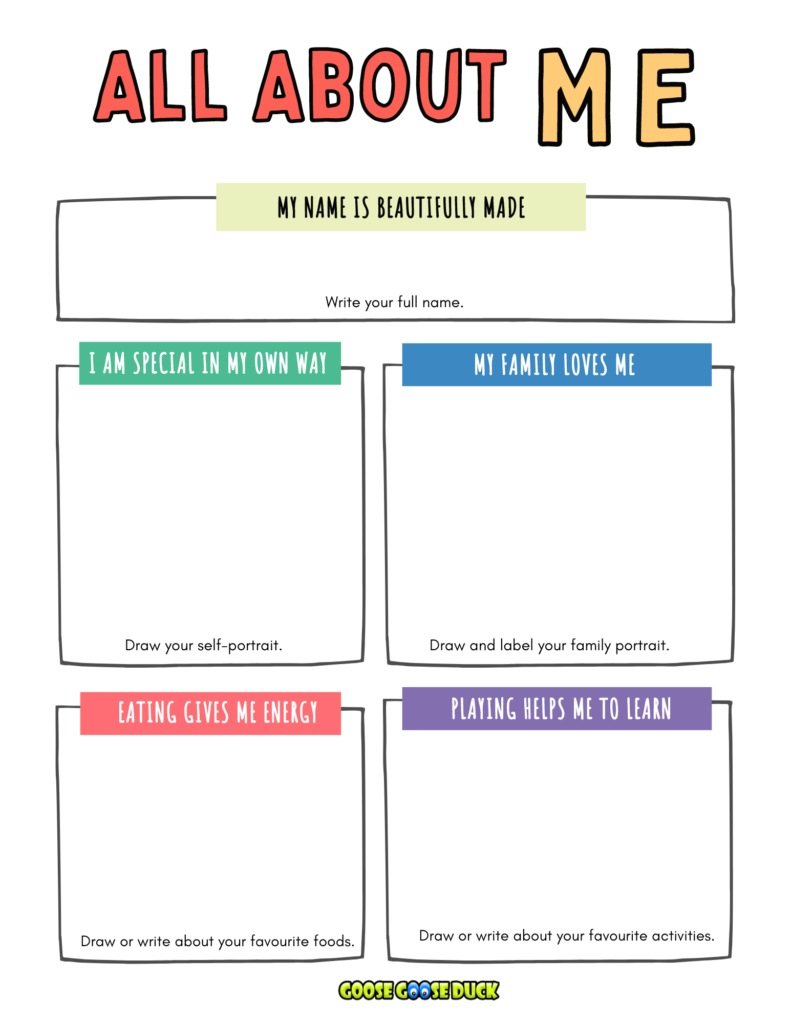
What Is An Autobiography
An autobiography is a self-written account of someone’s life. It is an intimate record, detailing the author’s personal experience and accomplishments throughout their lifetime. Autobiographies can be written as a memoir or in chronological order, covering all aspects of life that the writer finds relevant. Writing an autobiography allows you to take an organized look at your personal story, and reflect on your relationships, achievements, and the lessons learned along the way.
Autobiography For Kids
An autobiography is a great way to help younger children learn about themselves and make sense of the world around them. But it’s important to make sure that your child approaches their work in an organized manner, so that they don’t get overwhelmed or frustrated. Here are some best practices when helping your kindergartner organize their autobiography:
First, create a timeline or list of topics for them to cover. This will help keep their thoughts organized and ensure that they don’t miss any important aspects of their life story. Also, be sure to set aside enough time each day for your child to complete the project – but not too much time! It should be manageable and not become a chore. Here are a few sections to help the task be more manageable.
Beginnings: Birth Story
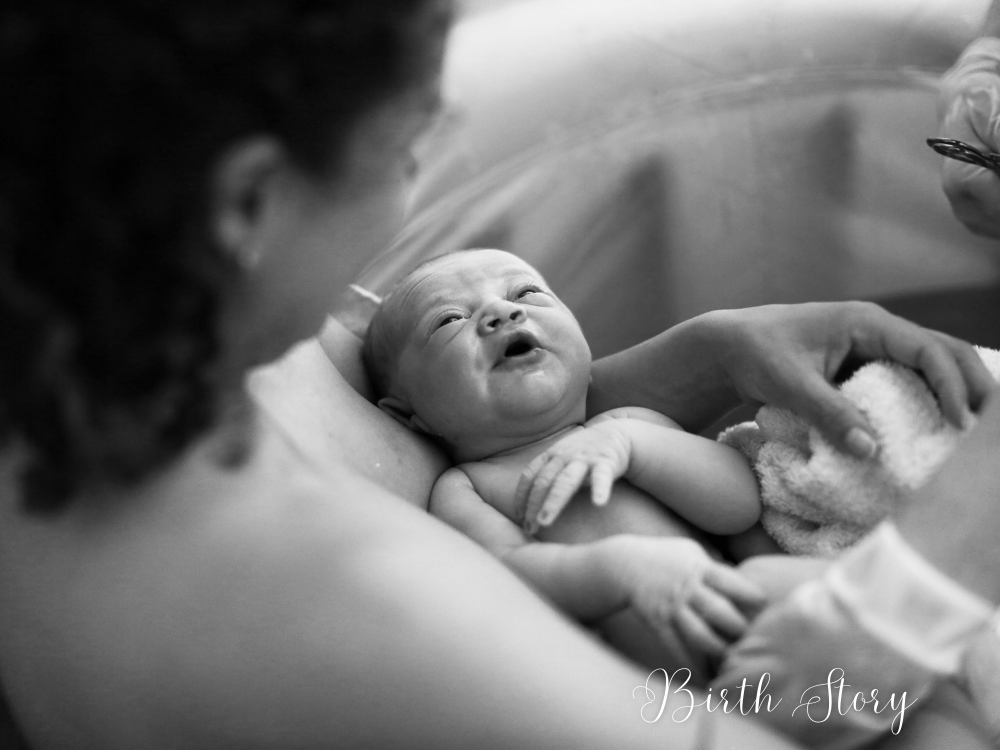
The day a baby is born is one of the most special days in life. It marks the beginning of a new journey and a new life, and it’s something that should be celebrated. It’s no surprise that parents want to remember this momentous day forever!
Beginning with your own birth story can help you tell your children just how significant they are and how worth celebrating they are. An autobiography can be an amazing tool for teaching kids about their family history and creating lasting memories. From start to finish, writing down every special detail will help bring that magical day back to life — from the first pictures taken after birth to the funny stories everyone tells about it afterward! By recording these moments, you’re preserving them for generations to come.
Early Years: Memories and Growth
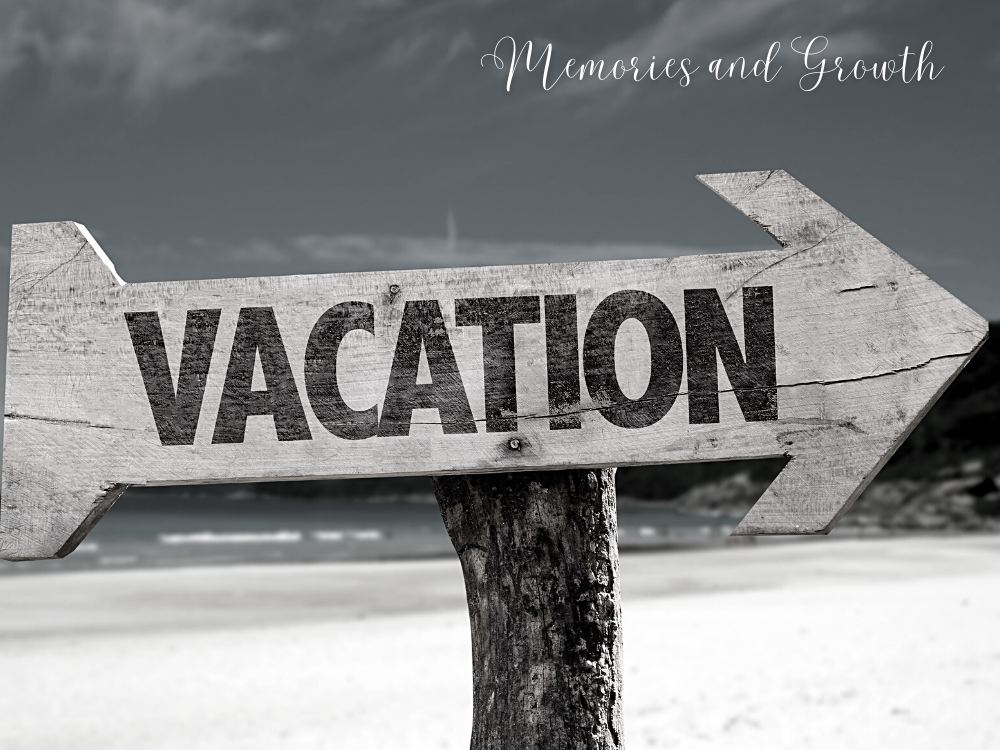
Writing an autobiography is a great way to help your child reflect on their journey so far and to think about what they have learned along the way. An autobiography in your child’s early years can be written in a fun, creative and engaging manner.
Start off by having your child brainstorm stories, memories and experiences from their early years – this will be the basis of their autobiography. When they share these stories with you, encourage them to express themselves creatively through drawings and pictures as well as words. If there are any stories that stand out for them or make them feel particularly happy or excited, find unique ways for your child to document these memories; for example, create a scrapbook of photographs or mementos from special occasions or trips.
School Days: Friends, Activities, and Experiences
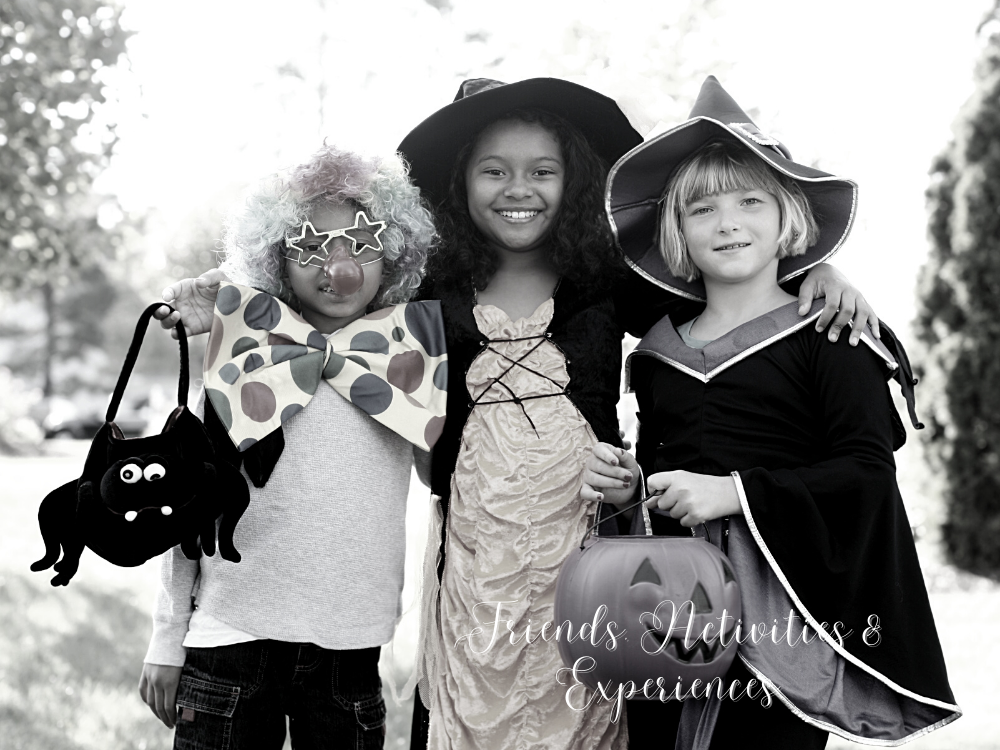
Writing an autobiography is a great way for your child to reflect on their experiences in preschool. It’s also a wonderful opportunity to explore and develop their writing skills.
Encourage your child to start by jotting down memories and stories about friends, activities, and experiences they had in preschool. From there, help them come up with specific details such as the names of their friends and the fun activities they did together. Ask questions that get your child thinking about how they felt during these experiences or any special moments that stand out from the rest. Another great tool is to have them draw pictures or even create a scrapbook of photos from those times; it will help spark more ideas for writing about them later on.
Life Changes: Adapting to Change
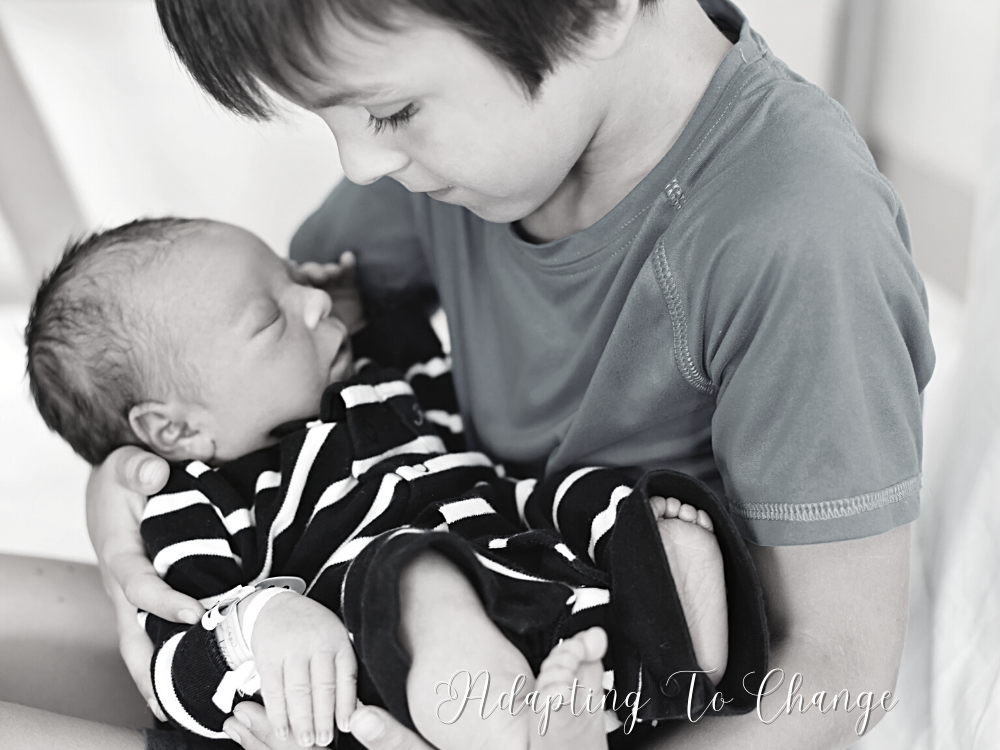
An autobiography can be used as a reflection tool for your child to become more aware of how their life has changed and how they’ve grown.
Talk with your child about what kind of activities they enjoyed in preschool and how that changed in kindergarten and first grade. Or perhaps you moved to another neighborhood and you can explore those feelings and differences. A conversation with open ended questions will give them an idea of what kind of things they should include when writing the autobiography.
Rewarding Achievement
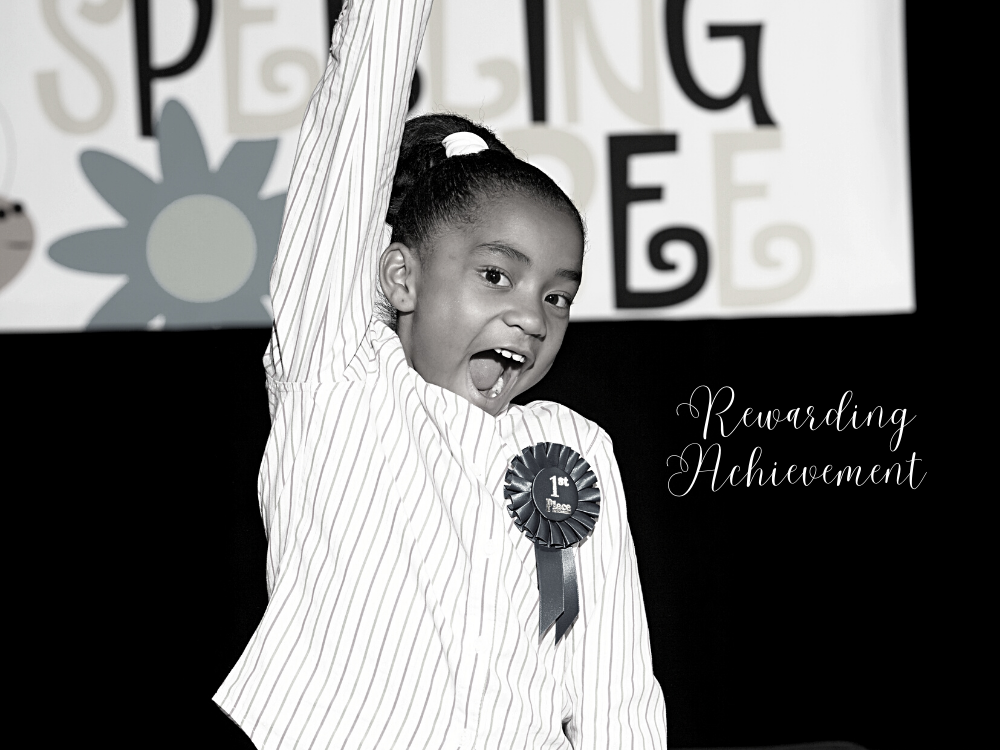
Starting the conversation is simple – ask your child what they are proud of when it comes to their accomplishments. This could include anything from getting an A in a test to helping out around the house, tying their shoes or being part of a team activity. As they share these stories, listen closely and explore each incident in detail so you can better understand the context in which it happened and how much effort your child put into achieving it.
Autobiography As A History Lesson
There are many different ways to teach American history to young children. One of the most entertaining and effective methods is by focusing on the lives of notable people who have made a significant impact in our nation’s history. Doing activities related to their life can be fun and engaging, while also teaching kids about different eras, cultural movements, and key figures in United States history. At Goose Goose Duck we make history relatable to young children by writing an autobiography like the great Frederick Douglass.
What Makes a Good Autobiography
A good autobiography goes beyond simply presenting the facts about a person’s life. It presents an emotional journey, offering readers a glimpse into how these events have shaped the author’s identity and worldview. Autobiographies often provide insight into moments of personal growth and transformation, as well as reflections on life’s struggles and triumphs. Through reading an autobiography, one can gain invaluable insight into someone else’s story – making it a powerful tool to foster empathy and understanding between individuals. By weaving together details both large and small that make up someone’s life, an effective autobiography will create a vivid portrait of their unique experience that is meaningful to both writer and reader alike.
Frederick Douglass’ autobiography, “Narrative of the Life of Frederick Douglass, an American Slave,” is one of the most powerful autobiographies in American history. It is a testament to human strength and resilience; it details how a man born into bondage was able to overcome adversity and use his wits to eventually become a free man. His story is relatable because it demonstrates that with hard work, ambition and courage there are no limits to what one can achieve.
Autobiography Activity and Printable Autobiography Template
Autobiographies are a powerful way to tell one’s story, as proven by Frederick Douglass. But autobiographies aren’t just for adults – children can use this form of literature too! Writing an autobiography can be a fun and meaningful activity that teaches children about their own lives in an engaging way.
To start, kids should think about the important events that have shaped their lives so far. From family moments to school memories, it all counts! They should also consider writing down any hopes or dreams they have for the future. By reflecting on these life experiences in written form, kids can explore their own identities and personalities in unique ways.
We have an autobiography book template including a cover page to help you assist your child in creating their own autobiography. The template is part of the Frederick Douglass Activity pack. This exercise gives your child the opportunity to investigate who they are and where they come from. The first two pages are all about your child when they were a baby. Tell them actual antidotes to help them fill out the blanks. For example, relate the story of when they were born and how you felt holding them in your arms. Tell them a funny story about how they would only eat sweet potatoes and the time they threw a bowl of ice cream on the floor. Your child will learn more about who they are as well as allow them to reflect on who they have developed into up until today.
DOWNLOAD THE FREE LESSON PLAN AND PRINTABLE AUTOBIOGRAPHY TEMPLATE HERE
What’s Inside The Frederick Douglass Activity Pack
There is no better way to ignite your child’s passion for learning than this activity pack introducing Frederick Douglass! A respected writer and orator, his unrelenting thirst for knowledge as a child led him to become one of the most influential men of the 19th century. Go beyond dates and events as you guide your child in activities reinforcing the characteristics that made Mr. Douglass great, and discover the greatness in themselves.
Literacy – Develop story building and vocabulary
STEM – Develop self-awareness and responsible decision making skills
Writing – Practice writing letters and whole sentences
STEM – Understand bartering
Literacy – Build confidence by memorizing and reciting a speech.
Literacy – Practice active listening skills
Literacy – Practice verbal communication skills
Literacy – Understanding the difference between fact and opinion
Literacy – Writing an autobiography
Click to purchase the full Frederick Douglass Activity pack at Amazon.com

